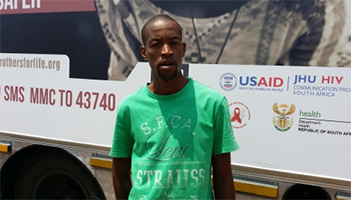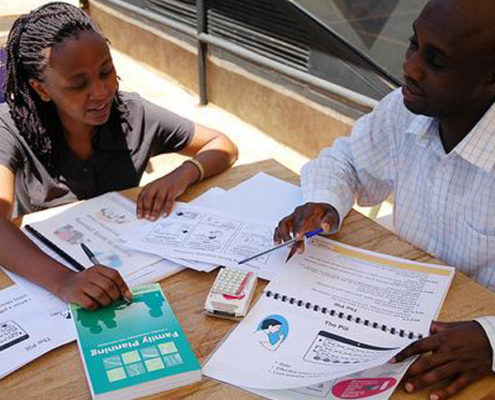
Adolescent Sexual and Reproductive Health Services and Implications for the Provision of Voluntary Medical Male Circumcision: Results of a Systematic Literature Review
This literature review revealed a general absence of health services in Sub-Saharan Africa that addressed the needs specific to male adolescents, exposing potential knowledge gaps that could negatively influence the population's benefit from voluntary medical male circumcision (VMMC) programming.

HIV Communication Capacity Strengthening: A Critical Review
This gray literature review examined varying definitions, measurements, implementations and effects of HIV communication capacity strengthening. Based on their review, the authors make recommendations for establishing a holistic model for HIV communication capacity strengthening, among other things.

HIV Communication Programs, Condom Use at Sexual Debut, and HIV Infections Averted in South Africa, 2005
This secondary statistical analysis examines survey data from South Africa in 2005 on condom use at sexual debut, normally occurring before HIV infection from unprotected sex, and how this might have contributed to the reduction of HIV infections in the early 2000s.

Strengthening Nonrandomized Studies of Health Communication Strategies for HIV Prevention
This article, focused on impact evaluations of health communication interventions for HIV prevention, was part of a special issue of JAIDS: Journal of Acquired Immune Deficiency Syndromes that was devoted to health communication and its role in and impact on HIV prevention and care.

Strategic Roles for Health Communication in Combination HIV Prevention and Care Programs
This is the introduction to a special issue of JAIDS: Journal of Acquired Immune Deficiency Syndromes that was devoted to health communication and its role in and impact on HIV prevention and care.

Swazi Men4Health: Communicating About HIV Risk Reduction Strategies with Men
This guide was developed to supplement Swaziland's extended National Multisectoral Strategic Framework for HIV and AIDS (eNSF) and address its inadequate targeting of interventions and services and lack of intensity for reaching those most vulnerable—in this case, men aged 25 to 39.

Swazi Women4Health: Communicating About HIV Risk Reduction Strategies with Women Aged 25 to 39
This guide was developed to supplement Swaziland's extended National Multisectoral Strategic Framework for HIV and AIDS (eNSF) and address its inadequate targeting of interventions and services and a lack of intensity for reaching those most vulnerable—in this case, women aged 25 to 39.

Swazi Girls4Health: Communicating About HIV Risk Reduction Strategies with Adolescent Girls and Young Women
This guide was developed to supplement Swaziland's extended National Multisectoral Strategic Framework for HIV and AIDS (eNSF) and address its inadequate targeting of interventions and services and a lack of intensity for reaching those most vulnerable—in this case, adolescent girls and young women.

When the Evidence Is Not Enough: Hormonal Contraception and HIV Webinar
This May 17, 2016 webinar, moderated by Nithya Mani, Office of HIV/AIDS, USAID, introduced a new communication framework around hormonal contraception, provided discussion around the adaptation process in Malawi and Swaziland, and included the perspective of women living with HIV related to this issue.

Strategic Communication Framework for Hormonal Contraceptive Methods and Potential HIV-Related Risks
This Strategic Communication Framework was developed as a tool…

Webinar: VMMC and Sustainability
Maintaining HIV Prevention Benefits of Male Circumcision by Incorporating VMMC Into Routine Newborn And Adolescent Health Service Delivery, presentations and recording from the July 9, 2015 webinar.
